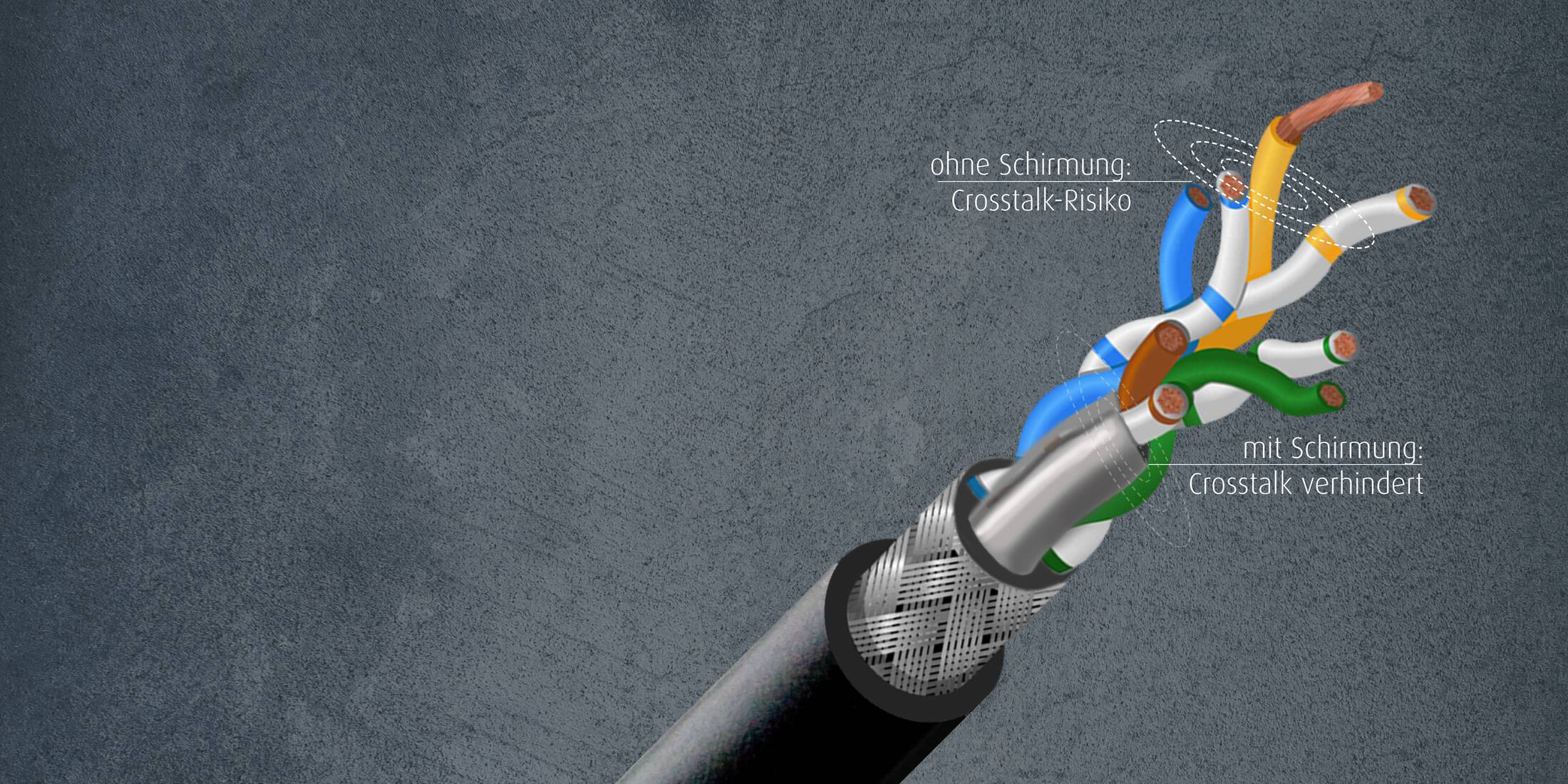Crosstalk is defined as an effect caused by the unintentional and undesired transmission (leakage) of a signal from one cable to another. Originally, this term meant that you could listen quietly to another conversation while being on the phone. The lines in old telephone exchanges were very close to each other and thus caused the above mentioned effect. Today, it occurs primarily during digital signal transmission, for example with Ethernet applications.
When a signal is transmitted via a conductor, an electromagnetic field is generated around it. This field is responsible for the crosstalk phenomenon. In adjacent conductors, this electromagnetic field generates voltage and currents, which are then perceived by the receiver as faulty signals. In old telephone systems they were faint voices, in digital data transmission they are faulty data. The higher the frequency range of a data transmission, the stronger these crosstalk effects will occur.
To avoid crosstalk, the electromagnetic field must be attenuated or dissipated. This is ensured by a combination of different shieldings and a specific arrangement of the individual conductor pairs. The CCAT 7A Long Run, for example, relies on a single stranding and foil shielding of the conductor pairs, which are then additionally shielded with an overall shield of tinned copper wire braid. The individual foil shielding safeguards against crosstalk between the conductor pairs and the braided shielding additionally protects against so-called alien crosstalk, i.e. undesired interference deriving from other lines.
How effectively an Ethernet cable prevents crosstalk is expressed in decibels (dB). The higher the crosstalk attenuation value, the lower the crosstalk. The CCAT 7A Long Run, for example, has 90 dB crosstalk attenuation at 500MHz over a distance of 100m. Comparable Ethernet cables only achieve 60-75 dB. It is therefore always worth while to compare your Ethernet cables with state-of-the-art models and update them. Higher data transmission volumes result in higher frequencies at low, i.e. sensitive signal levels, and that increases the risk of crosstalk.
More information on our CCAT 7A Long Run
